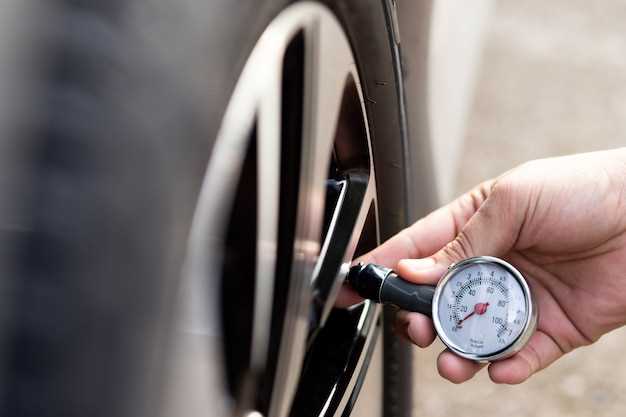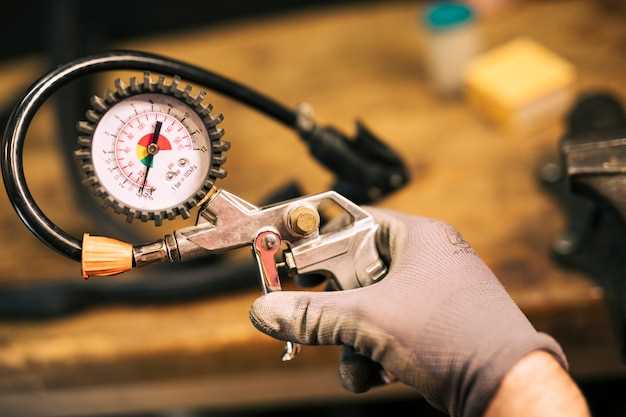

Understanding tire temperature is crucial for maximizing performance and safety in various automotive applications. Analyzing tire temp through advanced techniques, such as pyrometry, allows engineers and enthusiasts to gather essential data on tire behavior under different conditions. As tires interact with the road, their temperature fluctuates, potentially impacting grip, wear, and overall vehicle dynamics.
Pyrometers provide a non-contact method for measuring the surface temperature of tires, offering precise readings without the risk of damage or interference. By employing these techniques, one can accurately monitor the temp variations across different sections of the tire throughout a driving session. This enables a deeper understanding of how factors like speed, pressure, and road surface influence tire performance.
Collecting and analyzing temperature data not only aids in optimizing tire choice and maintenance but also plays a vital role in improving safety measures. Identifying overheating conditions can prevent tire failures and enhance vehicle stability, making the mastery of pyrometry techniques a valuable asset for racers, engineers, and automotive enthusiasts alike.
Choosing the Right Pyrometer for Tire Temperature Measurement
When measuring tire temperatures, selecting the appropriate pyrometer is critical for accurate data collection and analysis. The accuracy, response time, and ease of use are vital factors to consider in order to ensure reliable temperature logging during automotive activities.
Firstly, the type of pyrometer must match the specific needs of tire temperature measurement. Infrared pyrometers are widely used due to their ability to quickly measure surface temperatures without making contact. They offer a non-invasive approach and are essential for racing and performance environments where tire temperatures can fluctuate rapidly.
Next, the temperature range of the pyrometer must be appropriate for the expected tire temperatures. Most racing and performance applications require a pyrometer that can measure a range from ambient temperatures up to at least 300 degrees Celsius, as tire temperatures can rise significantly during operation.
Another crucial aspect is the emissivity setting. Tires have varying emissivity levels depending on their material and the surface conditions. Selecting a pyrometer with adjustable emissivity settings allows for more accurate readings by compensating for different tire compositions and wear conditions.
Furthermore, data logging capabilities are essential for those who want to analyze tire temperatures over time. A pyrometer with data logging features enables the user to record temperature readings at intervals, facilitating a comprehensive analysis of tire performance during different driving conditions.
Finally, consider the ergonomics and interface of the pyrometer. A well-designed pyrometer that is user-friendly and easily accessible ensures efficient operation in high-pressure environments. Features like backlit displays and programmable settings contribute to a better user experience while logging critical temperature data.
In summary, choosing the right pyrometer for tire temperature measurement involves evaluating the type of pyrometer, its temperature range, emissivity settings, data logging capabilities, and ease of use. Taking these factors into account ensures accurate logging and analysis, contributing to improved tire performance and safety.
Data Logging Techniques for Accurate Tire Temperature Analysis

Effective tire temperature analysis is critical for enhancing vehicle performance, safety, and tire longevity. Accurate data acquisition plays a vital role in achieving reliable results. Implementing sophisticated data logging techniques ensures that tire temperature is monitored under various conditions, providing essential insights into tire behavior and performance.
One fundamental approach is utilizing pyrometers for precise temperature measurements. Pyrometers are non-contact temperature measurement devices that enable real-time monitoring of tire temperatures during operation. These instruments can log data at high frequencies, capturing transient temperature fluctuations that may occur throughout a race or during specific driving maneuvers.
Data logging can be enhanced through the use of digital data acquisition systems. These systems integrate multiple temperature sensors, allowing for simultaneous monitoring of different tire locations, such as the inner and outer sidewalls or the tread. By collecting data from various points, analysts can better understand how heat distribution occurs within the tire, leading to improved tire management strategies.
Another essential aspect is ensuring the accuracy of temperature readings. Calibration of pyrometers before use is crucial, as environmental factors can influence readings. Regular calibration ensures that the data collected is reliable and reflects true tire conditions. Additionally, using data logging software that can filter and analyze the collected temp data provides comprehensive insights into tire performance over time.
Storage and analysis of logged data also play a significant role in the effectiveness of tire temperature assessments. Implementing a systematic approach for data storage increases accessibility and long-term tracking of tire performance trends. Data management systems can archive historical temperature records, offering a valuable reference for future tire development and adjustment practices.
Finally, integrating data logging techniques with vehicle dynamics simulations enhances the understanding of how tire temperatures affect overall vehicle performance. By combining real-time temperature data with predictive modeling, engineers can optimize tire setups based on comprehensive data analysis, leading to improved handling and tire life.
Interpreting Tire Temperature Data for Performance Optimization

Effective performance optimization in motorsports and high-performance driving heavily relies on accurately interpreting tire temperature data. By employing pyrometers for logging tire temperatures, drivers and engineers can gain valuable insights into the behavior of tires under various conditions, enabling them to make informed decisions for improved performance.
Understanding tire temperature is essential, as it directly correlates with tire grip, wear, and overall vehicle handling. The key areas to monitor include the inner, middle, and outer tire temperatures. An even temperature distribution across these zones typically indicates proper setup and alignment, while significant discrepancies can highlight issues such as misalignment, incorrect tire pressures, or unsuitable tire compounds.
When logging tire temperature data, consistently recording the readings during various stages of a session–such as after a lap or during different track conditions–provides a comprehensive view of tire performance. This allows teams to analyze how tire temperatures change as the race progresses, which can reveal vital information about tire degradation and peak performance periods.
Moreover, interpreting the temperature variations with respect to track layout and driving style can enhance data analysis. For instance, a particular corner may cause spikes in tire temperature, indicating areas where adjustments might be necessary to optimize grip or reduce overheating. Such detailed analysis helps in refining tire management strategies throughout a race.
In conclusion, logging and interpreting tire temperature data using pyrometer techniques are crucial for performance optimization. By understanding the nuances of tire temperatures, teams can make data-driven adjustments that enhance vehicle performance, ensure tire longevity, and ultimately contribute to a successful racing strategy.







